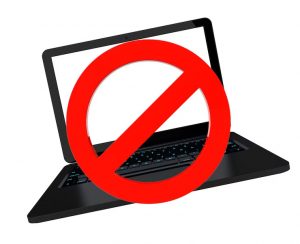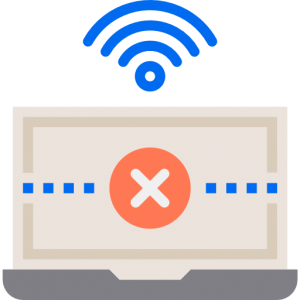Computer Not Connected To Internet
In our increasingly digital world, a computer not connected to the internet is akin to a ship without a compass. We rely on the web for work, communication, and entertainment, making a stable internet connection a modern necessity. Yet, the dreaded message that your Computer says no internet” can disrupt your online journey and leave you feeling stranded in the digital abyss.
In this comprehensive guide, we’ll embark on a voyage to understand the reasons behind this frustrating phenomenon where your Computer says no internet. We’ll delve into the depths of the issue, shedding light on what might be causing your connection to falter. But fear not, for we won’t abandon you without a lifeline – we’ll equip you with practical solutions to restore your internet access.
Furthermore, we’ll chart a course toward prevention, ensuring that you’re well-prepared to navigate these treacherous waters in the future. After all, in a world where connectivity is king, it’s crucial to know how to troubleshoot, remedy, and safeguard against the vexing problem of a computer not connected to internet
Join us on this journey as we embark on a quest to conquer the challenges of connectivity, ensuring that you’re never adrift in the vast sea of the digital world.
Why Computer Says No Internet:
When your Computer says no internet or indicates that it’s connected but has no internet access, it’s a perplexing and frustrating situation that can have various underlying causes. Let’s explore these reasons for a computer connected but no internet issue:
- Network Configuration Issues: Network configuration problems can often lead to a computer says no internet. Incorrect settings for IP addresses, DNS servers, or gateway addresses can disrupt internet connectivity.
- Wireless Interference Problems: Wireless interference from neighboring networks or electronic devices can cause a computer connected but no internet access. Signal disturbances can lead to connectivity issues.
- ISP Outages or Service Disruptions: Internet Service Provider (ISP) outages or temporary service disruptions in your area can result in your computer won’t connect to internet, even though it’s connected to your local network.
- Faulty or Outdated Network Drivers: Outdated or malfunctioning network drivers on your Computer can prevent it from accessing the internet, causing the issue computer connected but no internet.
- Router or Modem Issues: Problems with your router or modem, such as overheating, outdated firmware, or hardware faults, can lead to a computer connected but no internet.
 DNS Resolution Problems: DNS (Domain Name System) resolution issues can prevent your Computer from translating domain names into IP addresses, making it Computer says no internet access.
DNS Resolution Problems: DNS (Domain Name System) resolution issues can prevent your Computer from translating domain names into IP addresses, making it Computer says no internet access.- Malware or Security Software: Malware infections or overzealous security software can disrupt network traffic and cause your Computer not connected to internet.
- IP Address Conflicts: IP address conflicts within your local network can lead to network disruptions, resulting in a computer saying no internet.
- Browser or Software Problems: Browser or software-specific issues can sometimes give the impression that your Computer not connected to internet when other applications might still be able to connect.
- Hardware Faults or Cable Issues: Hardware problems with your network adapter or damaged Ethernet cables can contribute to connectivity issues such as the Computer can’t connect to WiFi or internet.
Understanding these reasons for a computer connected but no internet issue is the first step toward finding a solution and restoring your internet access. Depending on the specific cause, you can apply the appropriate troubleshooting steps to address the problem effectively.
How to Fix Computer Not Connected To Internet:
When faced with the vexing issue of a computer keeps dropping internet connection or repeatedly insists no internet, it’s essential to employ effective solutions to regain and maintain your online connectivity. Here are steps you can take to address and resolve these connectivity problems:
- Check Network Configuration: Verify and correct any network configuration issues on your Computer. Ensure that the IP address, DNS server settings, and gateway addresses are correctly configured for your network as this may help you resolve the computer won’t connect to internet.
- Diagnose Wireless Interference: Investigate potential wireless interference sources in your vicinity, such as neighboring networks or electronic devices. Adjust your router’s channel settings to minimize interference and enhance connectivity stability by eliminating the issue of the Computer can’t connect to WiFi or the internet.
- Contact Your ISP: In the event of persistent connectivity problems, reach out to your Internet Service Provider (ISP) to inquire about possible service outages or disruptions in your area. They can provide valuable insights and assistance to resolve the issue Computer says no Internet issue.
- Update Network Drivers: Keep your network drivers up-to-date to ensure compatibility and optimal performance an outdated network driver can lead to the issue computer can’t connect to wifi or internet. Visit your computer manufacturer’s website or the network adapter manufacturer’s site for driver updates.
- Router and Modem Maintenance: Regularly maintain your router and modem by updating firmware, checking for overheating, and ensuring that both devices are functioning correctly. Faulty hardware can contribute to the issue computer keeps dropping internet connection
 Troubleshoot DNS Issues: Address DNS resolution problems by using alternative DNS servers like Google DNS or OpenDNS. This can help resolve domain name translation issues and resolve the computer not connected to internet issue.
Troubleshoot DNS Issues: Address DNS resolution problems by using alternative DNS servers like Google DNS or OpenDNS. This can help resolve domain name translation issues and resolve the computer not connected to internet issue.- Scan for Malware: Conduct thorough malware scans to detect and remove any infections that may be disrupting your network traffic. Ensure that your security software is not blocking legitimate internet access.
- Resolve IP Address Conflicts: Investigate and resolve IP address conflicts within your local network as it may be the reason for the issue computer connected but no internet. Assign static IP addresses to devices when necessary to prevent conflicts.
- Try Different Browsers or Software: If your Computer says no internet in a particular browser, try using a different browser or testing other software applications to determine if the issue of computer not connected to internet is software-specific.
- Inspect Hardware and Cables: Carefully inspect your network adapter for hardware faults and examine Ethernet cables for damage. Replace any faulty components to ensure a stable connection.
- Restart Devices: Periodically restart your Computer, router, and modem. This can help clear temporary glitches like computer can’t connect to wifi or internet.
By implementing these solutions and diligently troubleshooting the issue of a computer keeps dropping internet connection or claims “no internet,” you can work toward achieving a more reliable and consistent online experience. Identifying the specific cause of the problem and taking targeted actions is essential in resolving connectivity woes effectively.
How to Prevent Computer Says No Internet Issue:
Preventing the frustrating scenario where a computer won’t connect to internet or can’t connect to WiFi is essential for maintaining uninterrupted online experiences. By adopting proactive measures and best practices, you can safeguard your connectivity. Here’s how to ensure that your Computer remains reliably connected to the internet and WiFi:
- Regular Network Checkups: Conduct routine network checkups to identify and address potential issues before they escalate into the issue of computer not connected to internet.
- Strong Passwords and Security: Strengthen your WiFi network security with robust, complex passwords. Regularly update these passwords to prevent unauthorized access and potential disruptions.
- Firewall and Security Software: Employ firewall and reputable security software to protect your Computer from malware and security threats that can lead to computer not connected to internet issue.
- Network Equipment Maintenance: Regularly update firmware for your router and modem to ensure optimal performance. Inspect your network hardware for overheating and other issues.
- Optimal Router Placement: Position your router in a central location within your home or office to maximize signal coverage and minimize dead zones.

- Device Limitations and Usage: Be mindful of device limitations and avoid overloading your network with too many connected devices or bandwidth-intensive activities, as this can also become the reason for the issue computer connected but no internet.
- Network Driver Updates: In order to avoid the future issue of computer connected but no internet keep network drivers on your Computer up-to-date to ensure compatibility and reliable connectivity with WiFi networks.
- Continuous Monitoring: Continuously monitor your network’s health to spot and address potential connectivity issues promptly.
- Router and Modem Compatibility: Ensure that your router and modem are compatible with your internet service plan and capable of handling your bandwidth requirements.
- Device Restart: Periodically restart your Computer, router, and modem to clear temporary glitches and maintain stable connectivity.
- Educate Users: Educate all users within your network about responsible internet usage and potential actions that may disrupt connectivity.
By incorporating these preventive measures into your network management routine, you can significantly reduce the chances of experiencing a situation where your Computer won’t connect to internet or can’t connect to WiFi. A proactive approach to network security and maintenance ensures that your connectivity remains reliable and uninterrupted.
Conclusion:
In conclusion, the ordeal of a computer not connected to the internet or persistently claiming “no internet” can be a daunting experience, disrupting work, leisure, and essential communication. However, by implementing the preventive measures and solutions discussed throughout this guide, you can proactively fortify your digital connection against these vexing issues.
Regular network checkups and the maintenance of strong security practices stand as robust defenses against a computer not connecting to the internet. By keeping your router and modem in optimal condition, updating network drivers, and practicing responsible device usage, you pave the way for a more reliable online experience.
Furthermore, staying vigilant with firewall and security software, educating all users within your network, and regularly restarting devices can ensure that connectivity disruptions are kept at bay.
Remember, a well-maintained and secure network is your stronghold against the challenges of a computer not connected to the internet or a computer declaring “no internet.” By adhering to these proactive measures, you can navigate the digital landscape with confidence, ensuring that your online journey remains smooth and uninterrupted. For any specific brand computer related issues resolution you can visit our Homepage.
